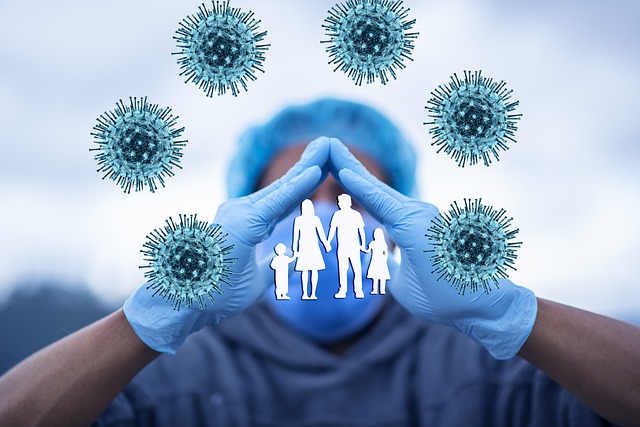The Real Ways HIV Can Spread: Myths vs Proven Facts
Despite decades of awareness campaigns, misconceptions about HIV transmission persist worldwide. Many people still confuse real infection routes with everyday myths, leading to unnecessary fear or risky behavior. Understanding how HIV truly spreads—and how it doesn’t—remains one of the most effective tools for prevention and for ending stigma.

HIV, or Human Immunodeficiency Virus, spreads through specific bodily fluids under particular conditions. While medical science has clearly established how the virus transmits from person to person, misinformation continues to create barriers to prevention, testing, and treatment. Knowing the facts helps individuals make informed decisions about their health and reduces the stigma faced by people living with HIV.
Blood-to-Blood Contact: The Main Transmission Route
Blood-to-blood contact represents one of the most efficient ways HIV can spread. This occurs when blood containing the virus enters another person’s bloodstream directly. The most common scenarios include sharing needles or syringes for drug injection, which creates a direct pathway for infected blood to enter the body. Healthcare workers may face occupational exposure through needlestick injuries, though modern safety protocols have significantly reduced these incidents. Blood transfusions were once a transmission route, but rigorous screening procedures implemented in the United States since 1985 have made this extremely rare. The virus cannot survive long outside the body, so casual contact with dried blood poses minimal risk. However, fresh blood from an HIV-positive person coming into contact with open wounds or mucous membranes can facilitate transmission.
Sexual Transmission: Understanding the Real Risks
Sexual contact accounts for the majority of HIV transmissions in the United States. The virus can spread through vaginal, anal, or oral sex when infected bodily fluids contact mucous membranes or damaged tissue. Anal intercourse carries the highest risk due to the delicate tissue lining the rectum, which can tear easily and allow the virus to enter the bloodstream. Vaginal sex also presents significant risk, with transmission possible in both directions between partners. While oral sex carries lower risk compared to other sexual activities, it is not risk-free, especially if cuts or sores are present in the mouth. Factors that increase transmission risk include having other sexually transmitted infections, which create inflammation and sores that provide entry points for HIV. Using condoms consistently and correctly reduces sexual transmission risk by approximately 80 percent. Pre-exposure prophylaxis (PrEP) medication has become a powerful prevention tool, reducing HIV acquisition risk by more than 90 percent when taken as prescribed.
Mother-to-Child Transmission: A Preventable Risk
An HIV-positive mother can transmit the virus to her child during pregnancy, childbirth, or breastfeeding. Without intervention, the transmission rate ranges from 15 to 45 percent. However, modern medical protocols have transformed this outcome dramatically. When pregnant women receive antiretroviral therapy throughout pregnancy and delivery, and infants receive preventive medication after birth, transmission rates drop below 1 percent. Healthcare providers recommend HIV testing as part of routine prenatal care, allowing early identification and treatment. In the United States, formula feeding is recommended for HIV-positive mothers since the virus can transmit through breast milk. Cesarean delivery may be recommended in certain circumstances to further reduce transmission risk. These interventions have made mother-to-child transmission increasingly rare in countries with access to comprehensive healthcare services.
Myths and Everyday Misconceptions
Numerous myths about HIV transmission persist despite scientific evidence to the contrary. HIV does not spread through casual contact such as hugging, shaking hands, or sharing utensils. The virus cannot transmit through saliva, tears, or sweat in amounts that would occur during normal social interaction. You cannot contract HIV from toilet seats, swimming pools, or mosquito bites. The virus requires specific conditions to survive and cannot replicate outside human cells. Kissing, even deep kissing, poses negligible risk unless both parties have significant bleeding gums or open sores. Sharing living spaces, touching doorknobs, or using gym equipment does not transmit HIV. These misconceptions contribute to stigma that affects people living with HIV, creating barriers to testing, treatment, and social support. Understanding what does not transmit HIV is as important as knowing the actual transmission routes.
Modern Prevention and Treatment Advances
Medical science has developed powerful tools to prevent and manage HIV infection. Antiretroviral therapy (ART) allows people living with HIV to achieve undetectable viral loads, meaning the virus cannot be detected in blood tests. When viral loads remain undetectable, HIV cannot transmit to sexual partners, a concept known as Undetectable equals Untransmittable (U=U). This breakthrough has transformed both treatment outcomes and prevention strategies. Pre-exposure prophylaxis (PrEP) provides HIV-negative individuals with daily medication that prevents infection if exposure occurs. Post-exposure prophylaxis (PEP) offers emergency prevention for individuals who may have been exposed, effective when started within 72 hours. Regular testing enables early diagnosis, which improves treatment outcomes and prevents unknowing transmission. Combination prevention strategies that include education, testing, treatment, and barrier methods have contributed to declining new infection rates in many communities. Access to these interventions varies, with ongoing efforts to reach underserved populations who face higher infection rates.
Moving Forward with Knowledge and Compassion
Accurate information about HIV transmission empowers individuals to protect themselves while reducing stigma that harms communities. The virus spreads through specific, preventable routes involving blood, sexual fluids, and mother-to-child transmission during pregnancy or breastfeeding. It does not spread through casual contact, making everyday interactions with HIV-positive individuals completely safe. Modern medicine offers effective prevention tools and treatments that have transformed HIV from a fatal diagnosis to a manageable chronic condition. By understanding the facts and rejecting myths, communities can support testing, treatment access, and dignity for everyone affected by HIV.
This article is for informational purposes only and should not be considered medical advice. Please consult a qualified healthcare professional for personalized guidance and treatment.




